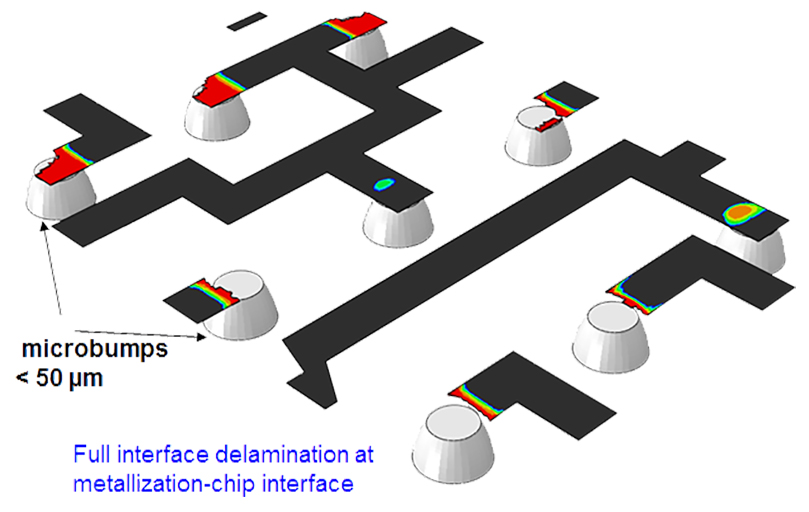New simulation approach: reliability analysis applying CZM for 3D packages
Thermo-mechanically driven interface delamination is one major concern that may cause reliability problems in multimaterial structures, generally occurring in 3D microsystems packaging. Finite element simulations, traditionally based on the strength of materials theory, are frequently used to reach a better understanding of the reasons for failure and of critical parameters. However, the correct evaluation of finite elements results at interfacial discontinuities is a general problem for the numerical analysis of interface delamination, as the stress field at sharp interface edges and interface cracks obeys a singularity. Fracture or damage-mechanical treatment is needed to avoid misleading simulation results. In recent years the damage methodology »cohesive zone modeling (CZM)« has been developed, which can additionally track the delamination progress, and has been applied to a variety of packaging and interconnect solutions. By adjustment to experimental findings, e.g. collected by shear tests as exemplified for a »metallization to stacked chip interface« according to the upper figure, parameters were collected for different electronic material interfaces. Thus, predictive capabilities are available for several interface strength evaluations.
 Fraunhofer Institute for Electronic Nano Systems
Fraunhofer Institute for Electronic Nano Systems